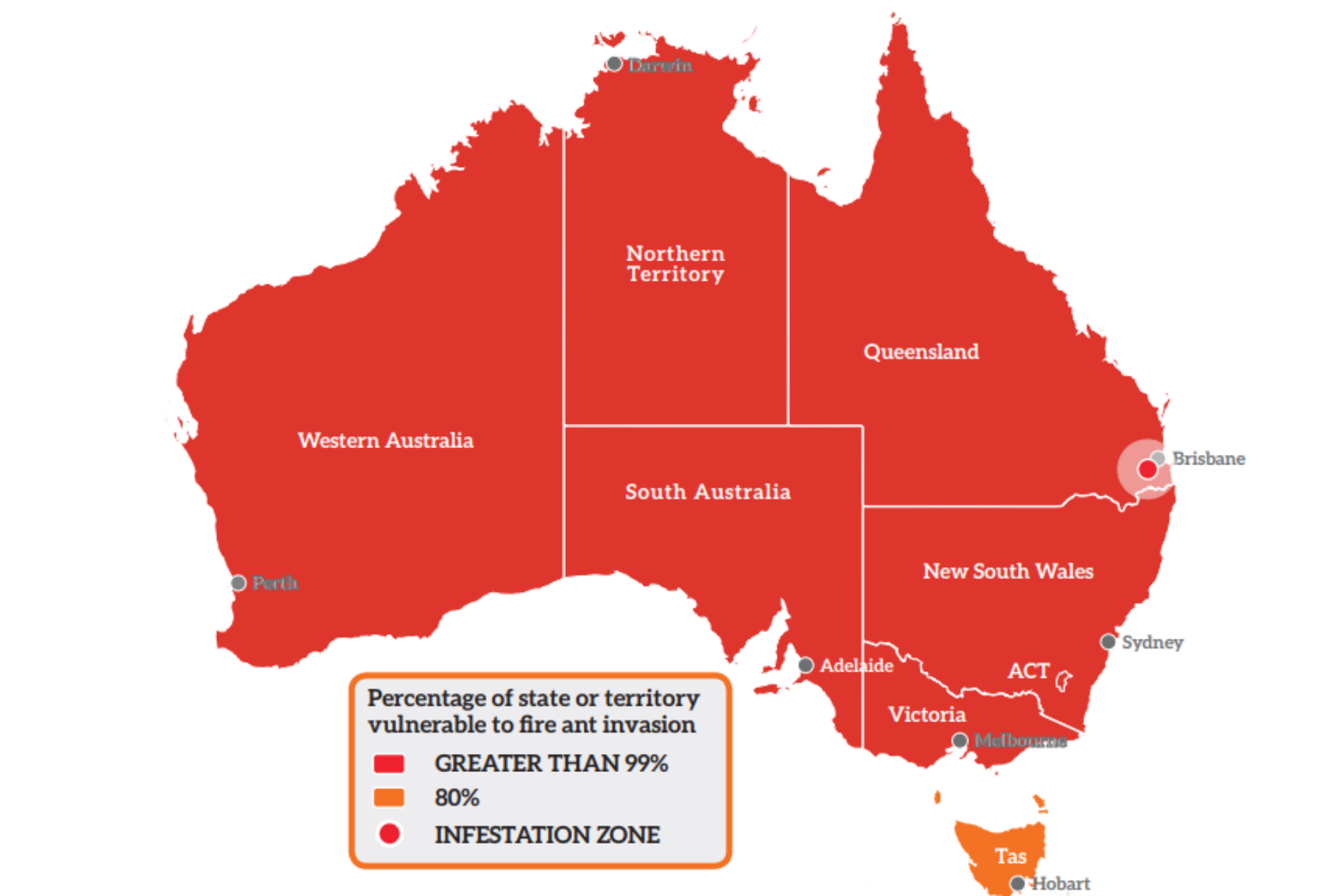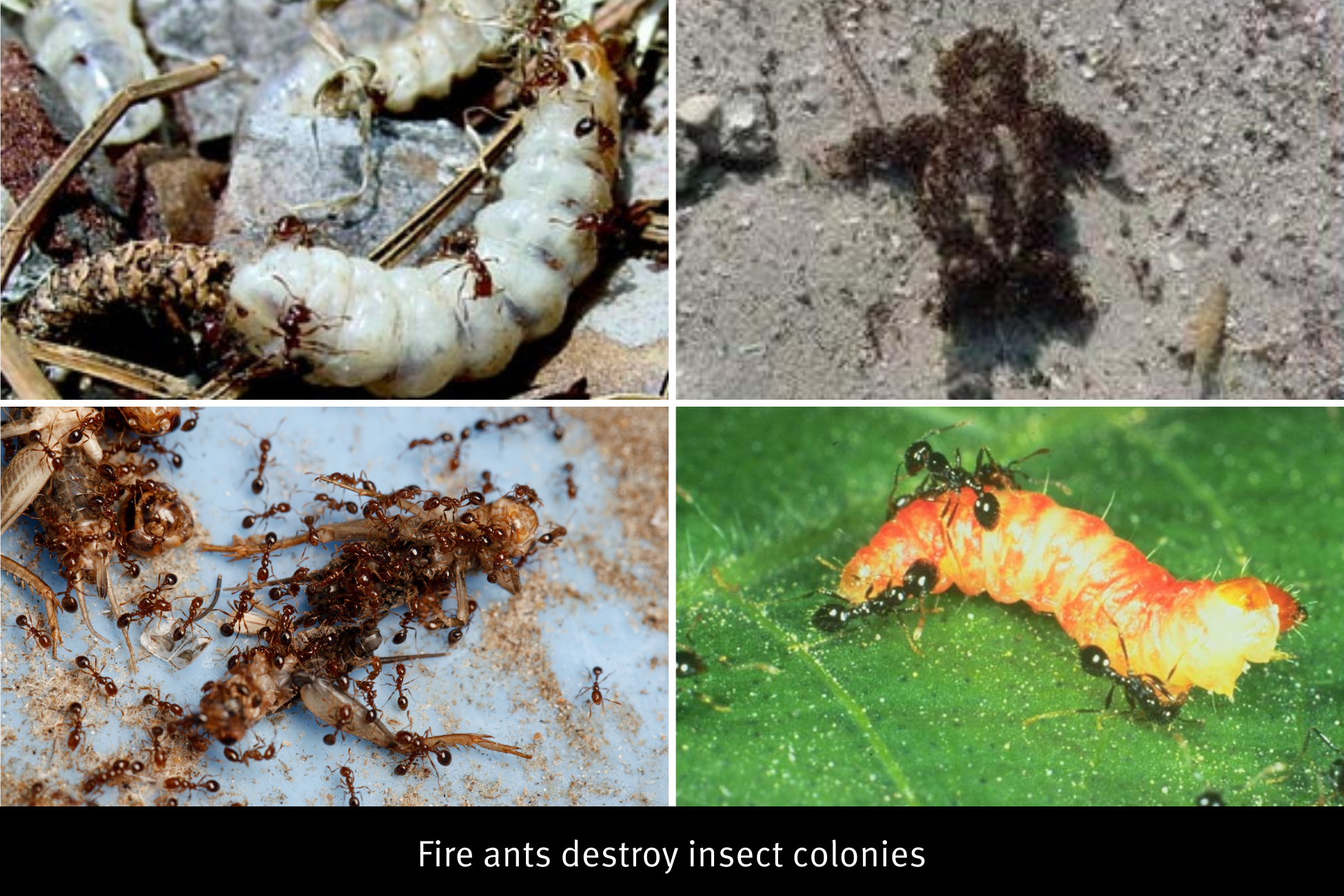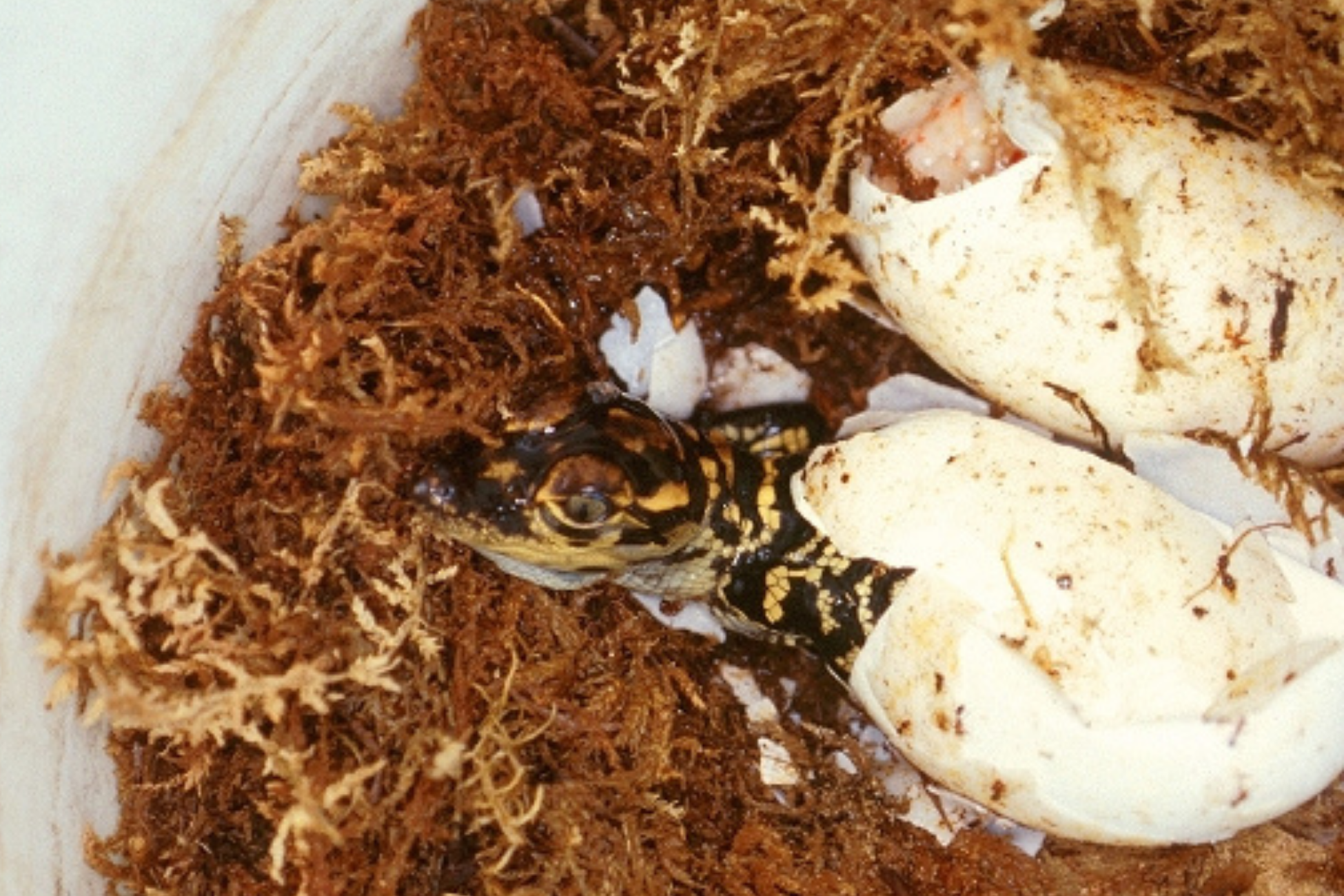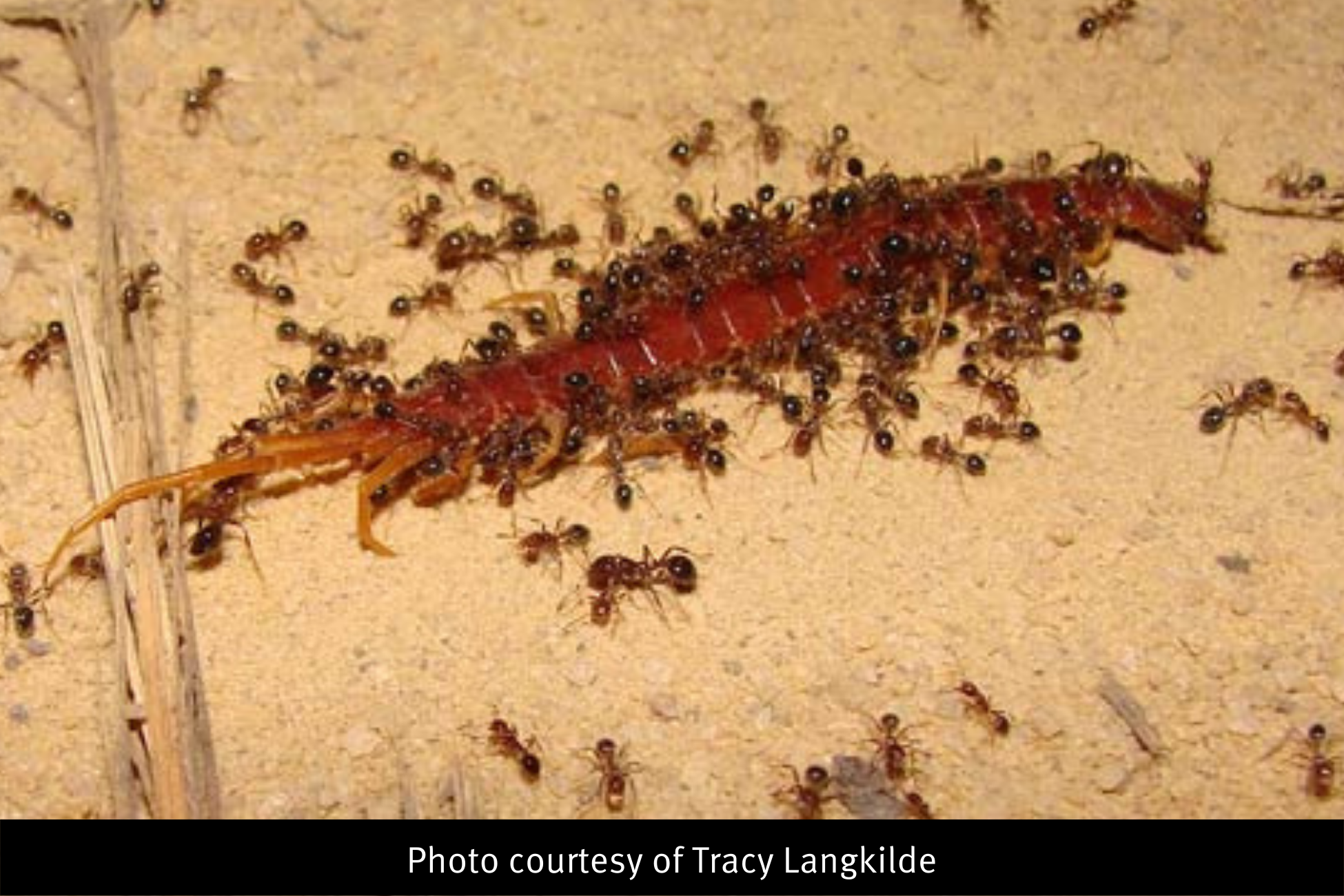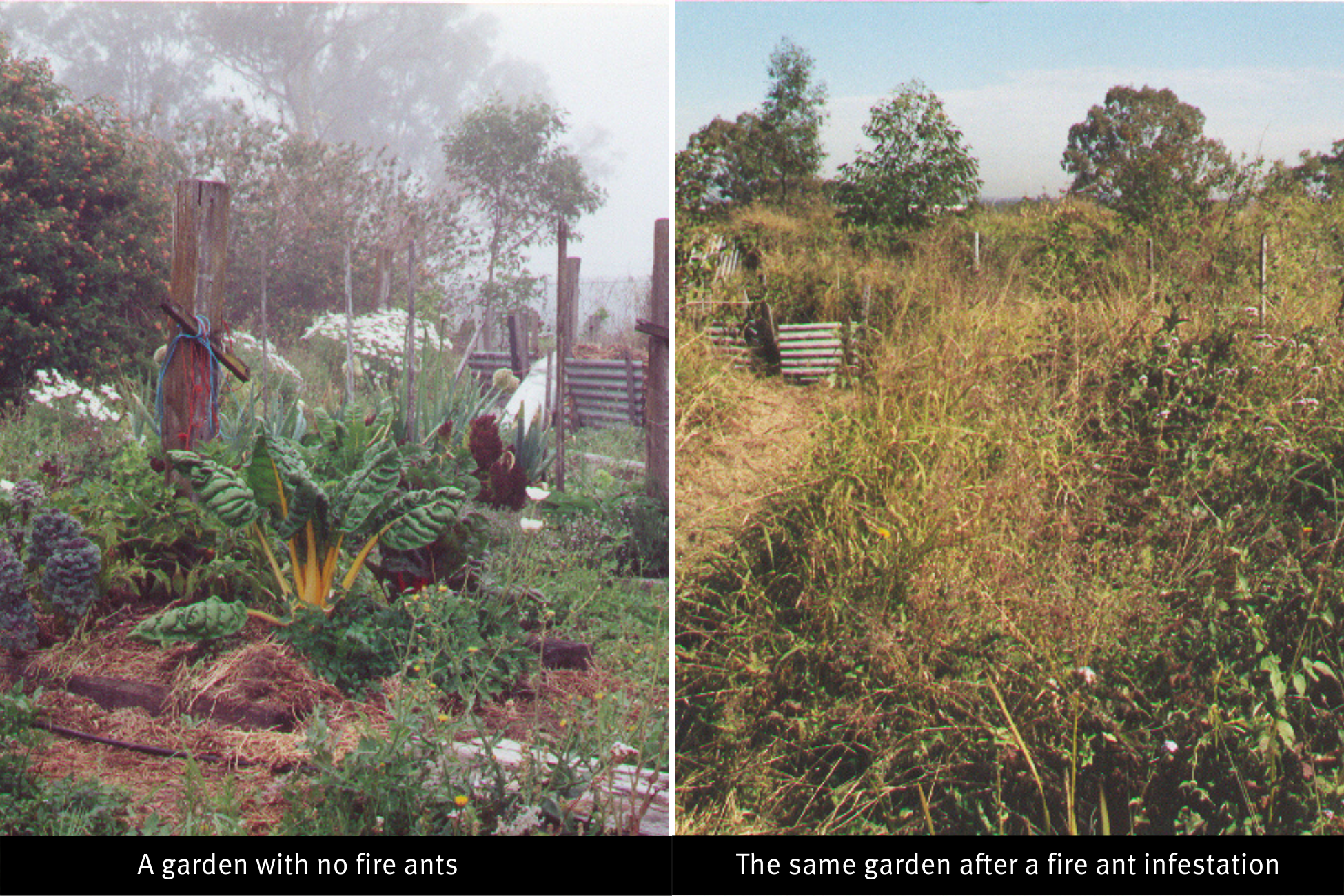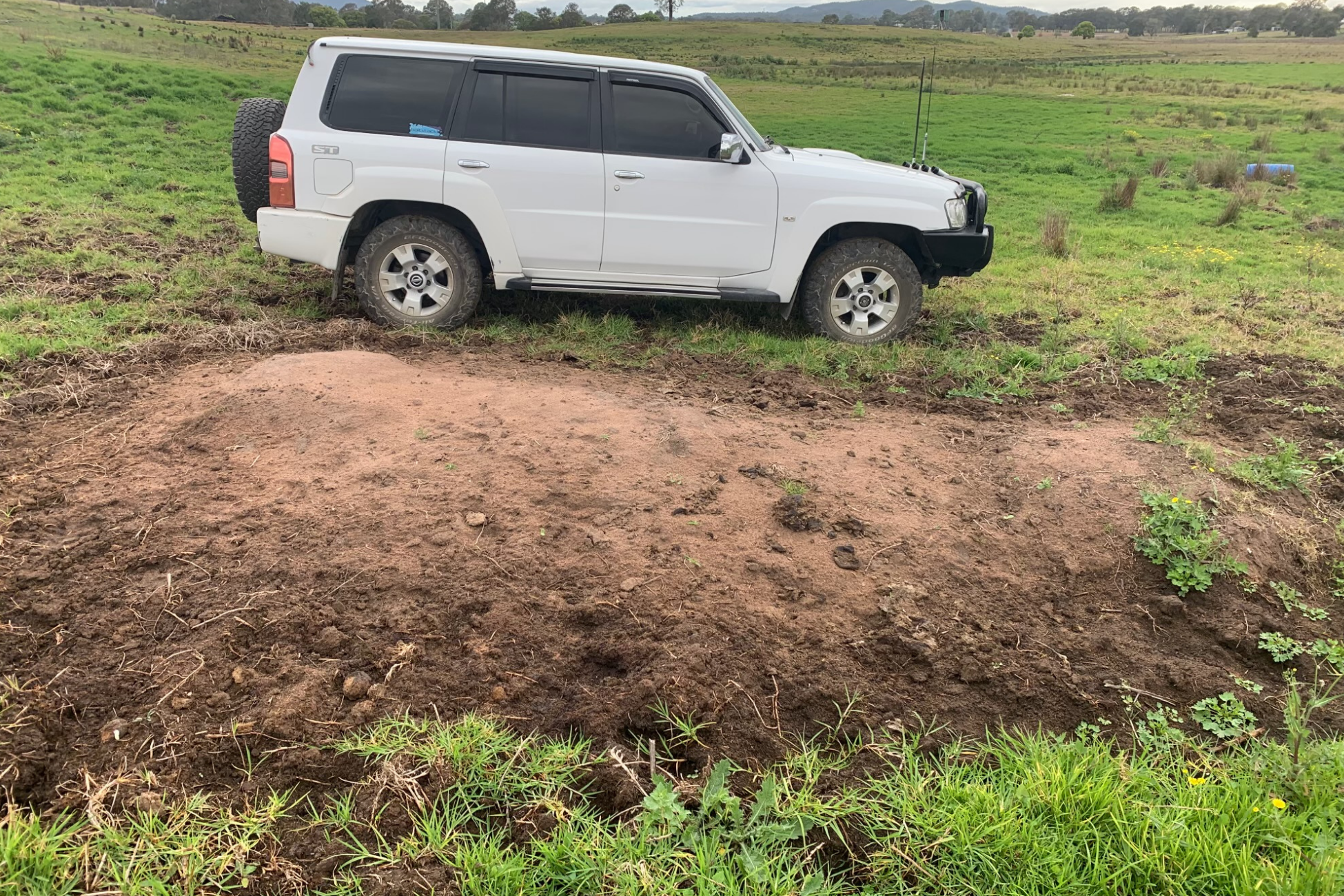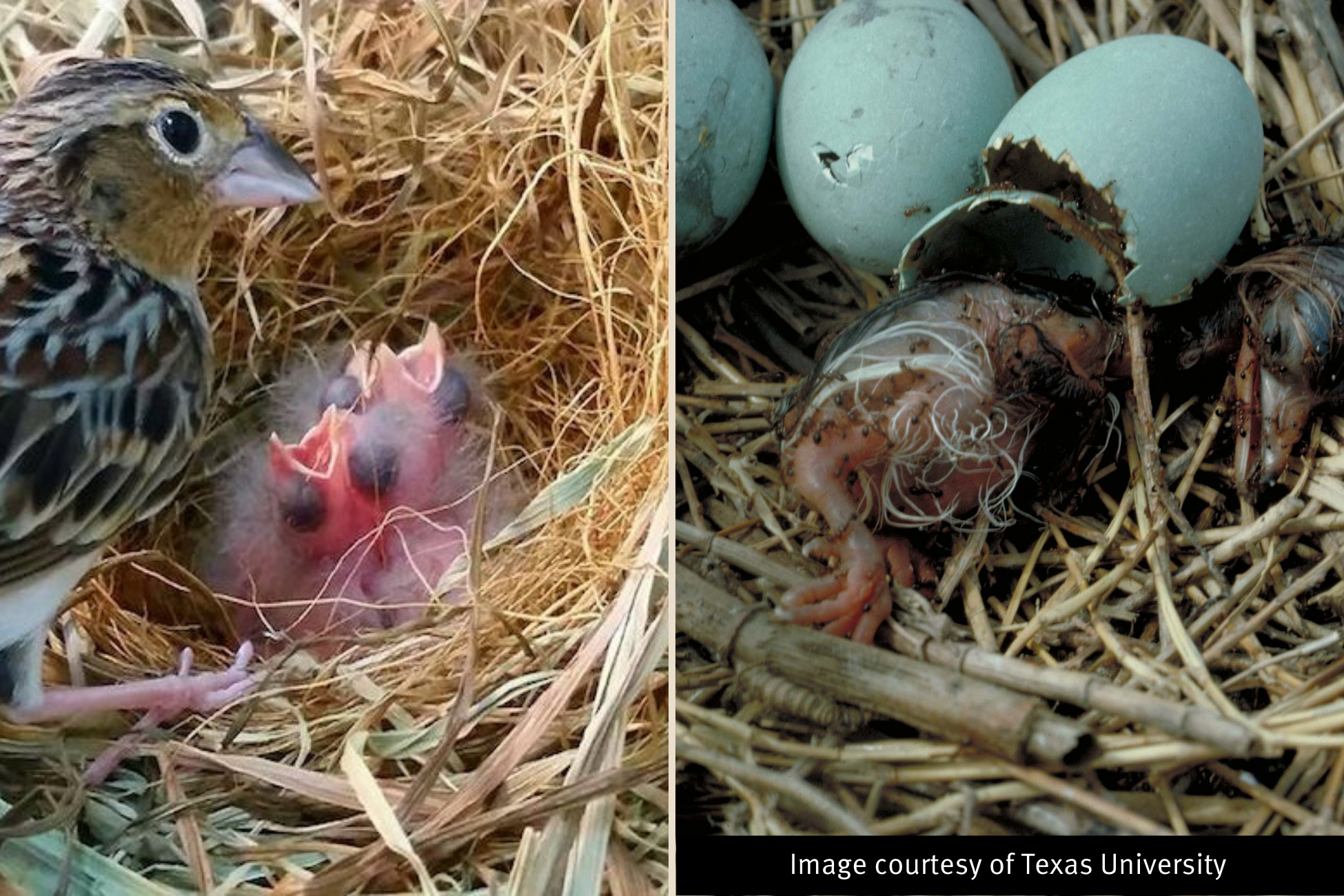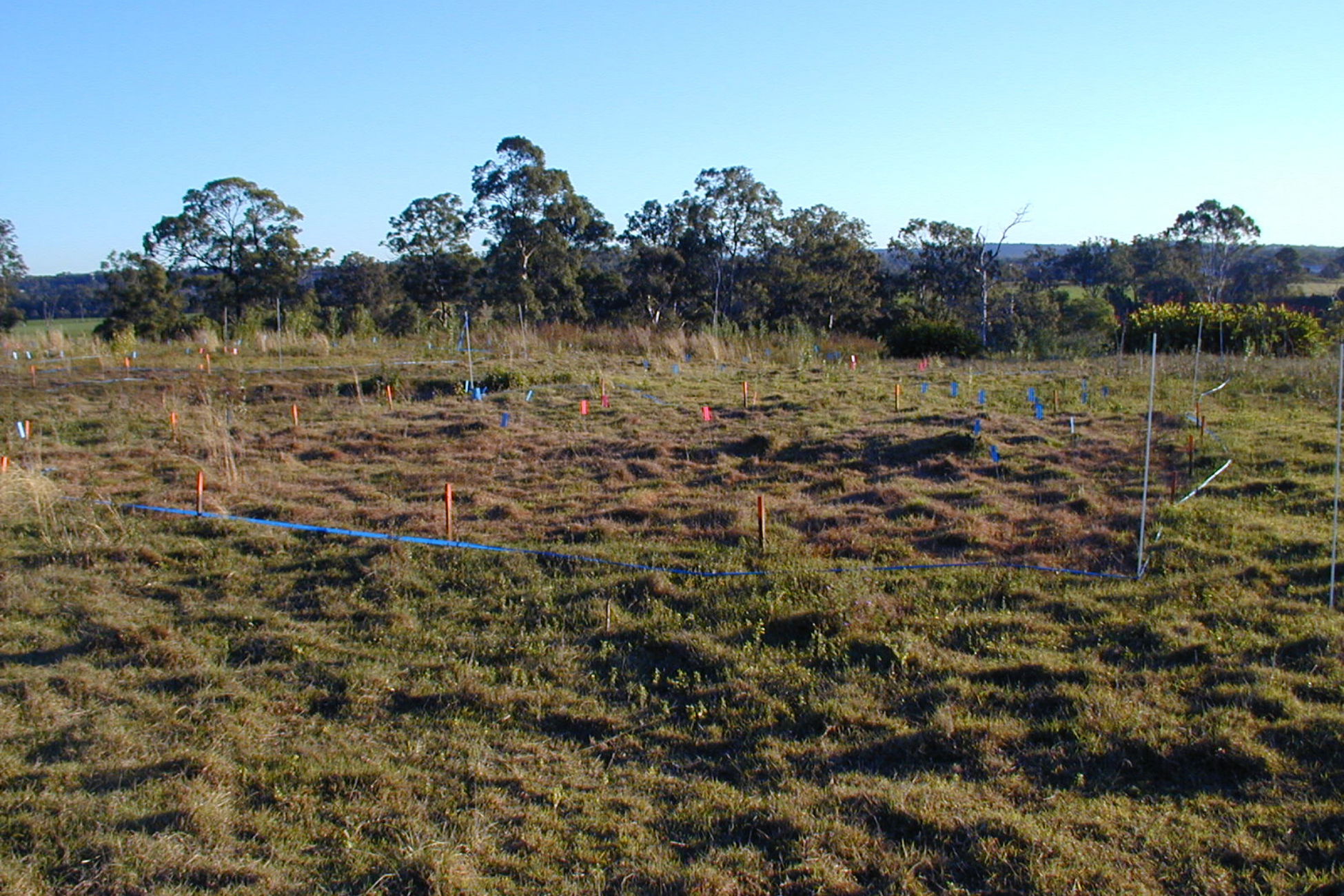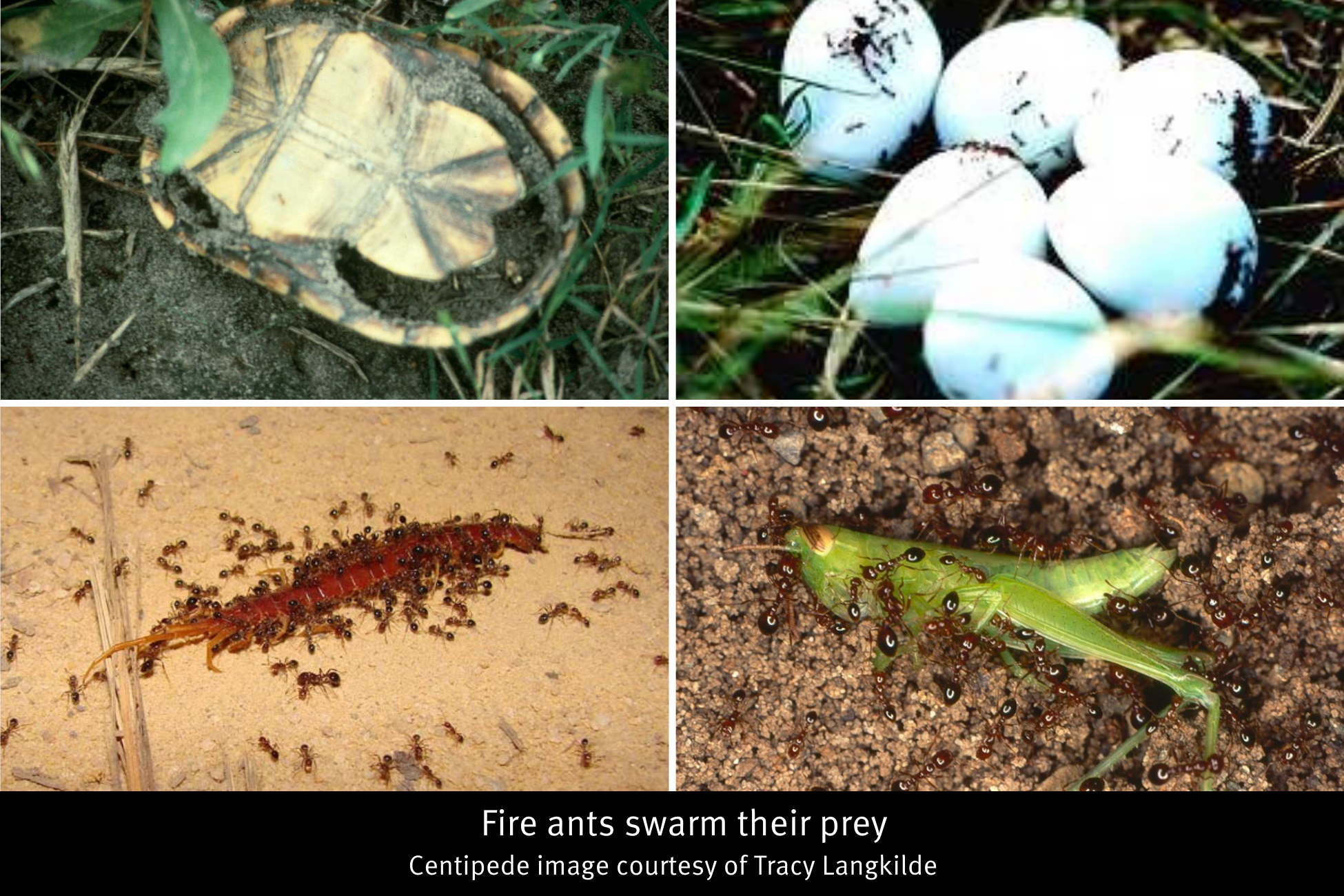Fire ants could have a devastating impact on Australia's unique native flora and fauna.

Fire ants have the potential to inhabit most areas of Australia, which could have disastrous consequences for our environment.
They have caused significant environmental problems in countries where they are established.
Environmental impacts in Australia
Fire ants have the potential to inhabit most areas of Australia as far north as Tropical North Queensland.
Fire ants can affect our environment as they:
- feed on fauna that nests or feeds on the ground, including insects, spiders, lizards, frogs, birds and mammals
- can displace or eliminate some native species.
- eat and damage seeds, possibly causing major ecosystem changes over time
- predate or disturb the insects and animals that pollinate native plants, which may also cause long-term changes to the vegetation of our bushland areas
- attack bird species that have ground-based feeding habits and species that occupy areas within 1m above ground may also be at risk.
The reduction in the biodiversity of Australian native fauna and flora is listed as a key threatening process under the Commonwealth Environment Protection and Biodiversity Conservation Act 1999 (EPBC Act). Read the report here.
Environmental impacts overseas
Fire ants are not only a problem in Australia. They are widespread in the United States. Regions that are not yet home to the pest are very concerned about the impacts fire ants would have on their ecosystem.
You can read about Hawaii’s study on the Hawaiian Ecosystems at Risk project's report on red imported fire ant (Solenopsis invicta) (PDF, 37KB) and its potential environmental impacts in Hawaii.

